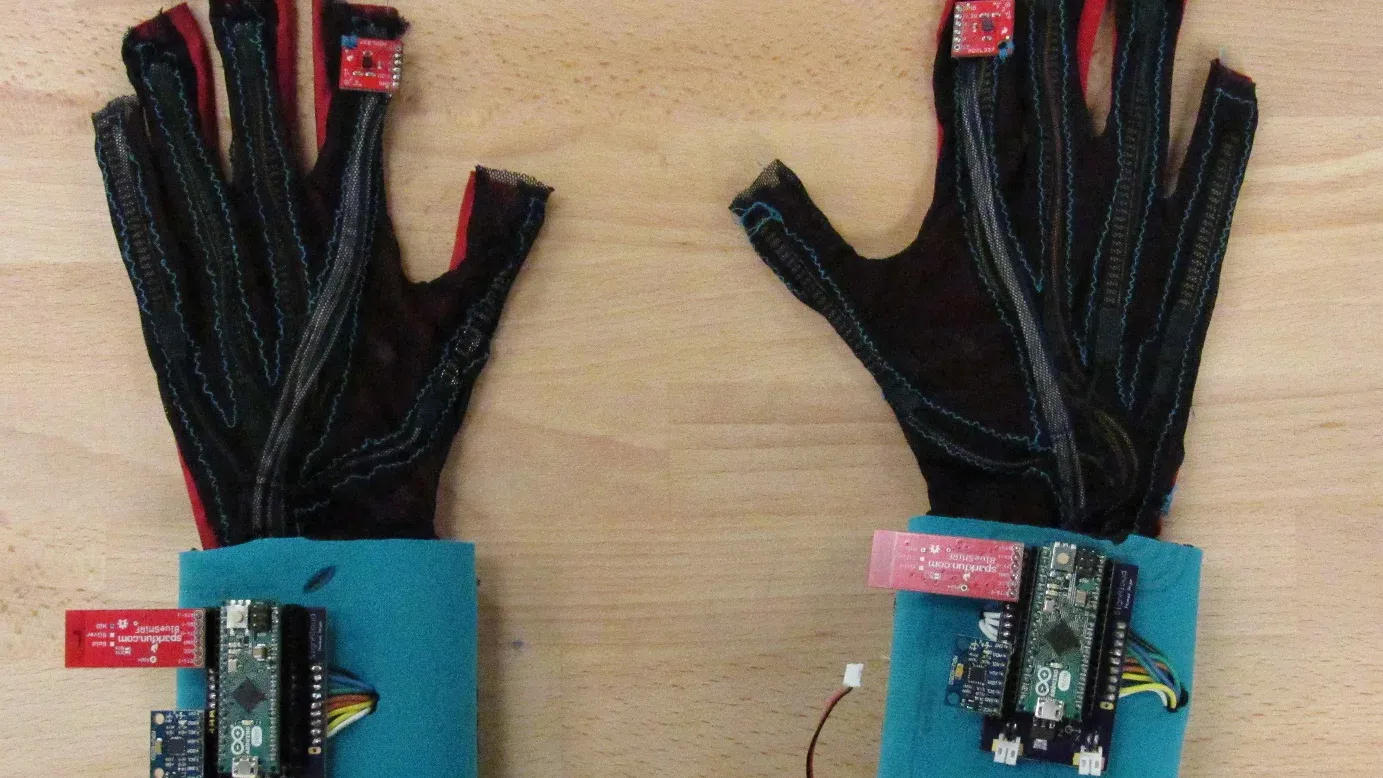Sign Language Gloves - An Unnecessary Distraction
Why deaf people are so sick of these.

Every year or so, someone comes out with a new pair of sign-language gloves. The latest was a group of researchers at UCLA, who at least seemed to improve on previous iterations.
Let me explain why we Deaf people are so utterly bored of this trend. Perhaps then some future engineering student will come across this blog post and think twice about building sign-language gloves for his senior project.
As a technology, the sign-language glove has more to do with the preoccupations of hearing people than a genuine attempt to understand Deaf people's needs. Just from sight alone, I can't imagine any Deaf signer willing to use this every day when interacting with hearing non-signers. The thought of putting electronic gloves on during a hot day makes me cringe.
As a person who has been deaf from birth and has been using sign language since then, I see the following issues:
- Slow & awkward. Watch any two Deaf signers having a conversation. Chances are, you'd be blown away. The UCLA system can translate at a maximum rate of one word per second (60 wpm). A fluent ASL user can sign at 110-130 wpm! That's as fast as hearing people talk. Why would Deaf people use a slow, expensive technology to communicate when we could use pen & paper or a smartphone app?
- Limited vocabulary. Even though UCLA's version can "read" 660 signs, American Sign Language (ASL) alone has 10,000 signs that correspond to English words! That doesn't count the signs that don't correspond to English words. What's more, signing doesn't just use the hands. It uses the arms and torso, too. Do you know any Deaf people willing to don an electronic long-sleeved shirt?
- No/little support for facial expressions. Almost every signed language in the world, including ASL, incorporates facial expressions in their grammar. Not using facial expressions during signing is akin to writing without punctuation, or speaking in a flat monotone tone - a lot of meaning will be lost. The UCLA system does incorporate a couple of sensors on the face to capture expressions, but it does not seem to provide enough resolution. And... frankly, if I don't want to wear electronic gloves just to communicate, why would I put sensors on my face?
- No effort to understand what the d/Deaf community needs. These engineers took the time to learn fingerspelling and basic signs, but neglected to have hard conversations with would-be users about how well their device would work in the real world. If they did, it's not obvious. Any signer would have told them the gloves have limited functionality and thus cannot compete with the four-dimensional expressiveness of signed language. What's more, it puts the communications burden on deaf people.
- An overly technocratic view of the world. Engineers, by their nature, assume every problem has a clearly defined solution. That's all well and good when the problem is technological in nature, but this approach fails where sociology and culture come in play.
- A savior complex. I don't want to speculate too much on the motives of strangers, but these efforts have the ring of "trying to help" where it's not wanted. Prize money, and the motives of the organizations giving out the awards, may also be a factor.
It's a demonstration of why engineering students need to take a class or two in marketing, technology commercialization and/or user interfaces, so they don't get sidetracked building things nobody wants.
So what would actually work in the real world?
We already have effective speech-to-text apps on our phones (as of this writing, I used Google Live Transcribe on Android). They are far more convenient to use than electronic gloves, can handle much more vocabulary, and don't have the "dork" factor. Even though it doesn't handle both directions of communication, it's made my interactions much easier without adding more bulk to my wardrobe. And it's free.
Or you could just learn sign language. Keith Cowing, a former NASA biologist and professional ASL interpreter for a decade, has this to say: "The guys who developed these are clever - I'll give them that - but it is vastly easier to learn ASL. And far more human."
For more reading on this subject here is a link:
